
Roger William Corman was an American film director, producer, and actor. Known under various monikers such as "The Pope of Pop Cinema", "The Spiritual Godfather of the New Hollywood", and "The King of Cult", he was known as a trailblazer in the world of independent film.
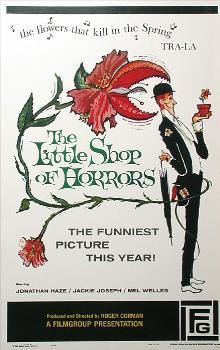
The Little Shop of Horrors is a 1960 American horror comedy film directed by Roger Corman. Written by Charles B. Griffith, the film is a farce about a florist's assistant who cultivates a plant that feeds on human blood. The film's concept may have been inspired by "Green Thoughts", a 1932 story by John Collier about a man-eating plant. Hollywood writer Dennis McDougal suggests that Griffith may have been influenced by Arthur C. Clarke's 1956 science fiction short story "The Reluctant Orchid".

The Raven is a 1963 American comedy gothic horror film produced and directed by Roger Corman. The film stars Vincent Price, Peter Lorre, and Boris Karloff as a trio of rival sorcerers. The supporting cast includes Jack Nicholson as the son of Lorre's character.

The Trip is a 1967 American psychedelic film released by American International Pictures, directed by Roger Corman and written by Jack Nicholson. It was shot on location in and around Los Angeles, including on top of Kirkwood in Laurel Canyon, the Hollywood Hills, and near Big Sur, California, over three weeks in March and April 1967. Peter Fonda stars as a young man who experiences his first LSD trip.
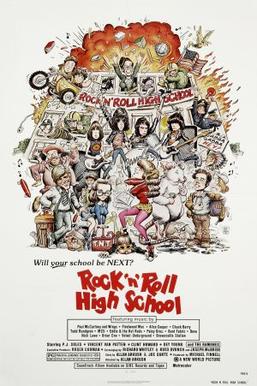
Rock 'n' Roll High School is a 1979 American musical comedy film directed by Allan Arkush, produced by Michael Finnell, and starring P. J. Soles, Vince Van Patten, Clint Howard and Dey Young. The film features the punk rock group Ramones.
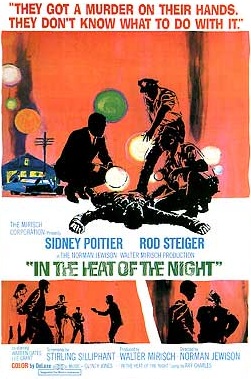
In the Heat of the Night is a 1967 American neo-noir mystery drama film directed by Norman Jewison, produced by Walter Mirisch, and starring Sidney Poitier and Rod Steiger. It tells the story of Virgil Tibbs (Poitier), a Black police detective from Philadelphia, who becomes embroiled in a murder investigation in a small town in Mississippi. The film was adapted by Stirling Silliphant from John Ball's 1965 novel of the same name.

The Wild Angels is a 1966 American independent outlaw biker film produced and directed by Roger Corman. Made on location in Southern California, The Wild Angels was the first film to associate actor Peter Fonda with Harley-Davidson motorcycles and 1960s counterculture. It inspired the biker film genre that continued into the early 1970s.
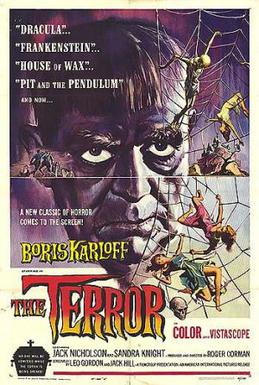
The Terror is a 1963 American independent horror film produced and directed by Roger Corman. The film stars Boris Karloff and Jack Nicholson, the latter of whom portrays a French officer who is seduced by a woman who is also a shapeshifting devil.

Caged Heat, also known as Renegade Girls, is a 1974 women in prison film. It was written and directed by Jonathan Demme for New World Pictures, headed by Roger Corman. The film stars Juanita Brown, Roberta Collins, Erica Gavin, Ella Reid, Rainbeaux Smith, and Barbara Steele.

Rosewood is a 1997 American historical drama film directed by John Singleton, inspired by the 1923 Rosewood massacre in Florida, when a white mob killed black people and destroyed their town. In a major change, it stars Ving Rhames as an outsider who comes into Rosewood and inspires residents to self-defense, wielding his pistols in a fight. The supporting cast includes Don Cheadle as Sylvester Carrier, a resident who was a witness, defender of his family and victim of the riot; and Jon Voight as John Wright, a sympathetic white store owner who lives in Rosewood. The three characters become entangled in an attempt to save people from racist White people attacking the Black residents of Rosewood.
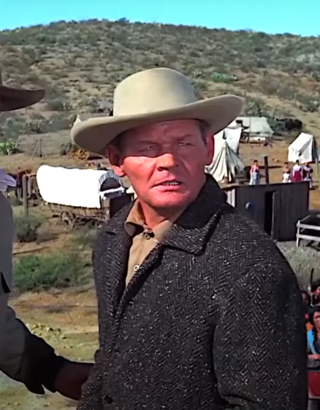
Leo Vincent Gordon was an American character actor and screenwriter. During more than 40 years in film and television he was most frequently cast as a supporting actor playing brutish bad guys but occasionally played more sympathetic roles just as effectively.
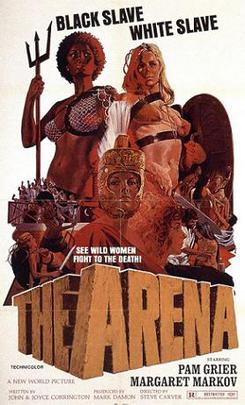
The Arena, also known as Naked Warriors, is a 1974 gladiator exploitation film directed by Steve Carver and starring Margaret Markov and Pam Grier. Joe D'Amato, the film's cinematographer, has stated that he took over direction of the fight scenes in the film.

Big Bad Mama is a 1974 American action-crime-sexploitation comedy movie produced by Roger Corman, starring Angie Dickinson, William Shatner, and Tom Skerritt, with Susan Sennett and Robbie Lee. This movie is about a mother, Wilma, and her two daughters, Polly and Billie Jean, who go on a crime spree. After the mother unexpectedly falls in love with a bank robber it all ends, with tragic consequences. Big Bad Mama became a cult hit and was followed by a sequel, Big Bad Mama II, in 1987.

Creature from the Haunted Sea is a 1961 horror comedy movie directed by Roger Corman. Written by Charles B. Griffith, the movie is a parody of spy, gangster, and monster movies, concerning a secret agent, XK150, who uses the name "Sparks Moran" in order to infiltrate a criminal gang commanded by Renzo Capetto, who is trying to transport an exiled Cuban general with an entourage and a large portion of the Cuban treasury out of Cuba. Filmgroup released the movie as a double feature with Devil's Partner.

The Haunted Palace is a 1963 horror film released by American International Pictures, starring Vincent Price, Lon Chaney Jr. and Debra Paget, in a story about a village held in the grip of a dead necromancer. The film was directed by Roger Corman and is one of his series of eight films largely based on the works of American author Edgar Allan Poe.

Charles Byron Griffith was an American screenwriter, actor, and film director. He was the son of Donna Dameral, radio star of Myrt and Marge, along with Charles' grandmother, Myrtle Vail, and was best known for writing Roger Corman productions such as A Bucket of Blood (1959), The Little Shop of Horrors (1960), and Death Race 2000 (1975).
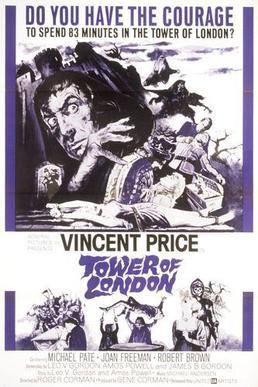
Tower of London is a 1962 historical drama and gothic horror film directed by Roger Corman and starring Vincent Price and Michael Pate. The film was produced by Edward Small Productions.

Rock All Night is a 1957 crime drama film produced and directed by Roger Corman. Distributed by American International Pictures, it is based on a 25-minute television episode of The Jane Wyman Show from 1955 called "The Little Guy." It stars Dick Miller, Russell Johnson and Abby Dalton. It co-stars Mel Welles, Ed Nelson and Clegg Hoyt. The film was released as a double feature with Dragstrip Girl.
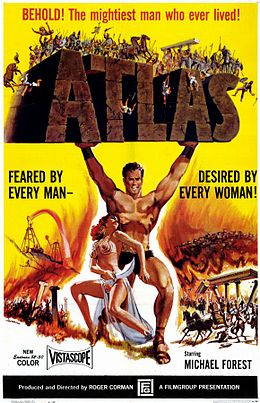
Atlas is a 1961 peplum film directed by Roger Corman and starring Michael Forest and Frank Wolff. It was filmed in Greece. Corman called it "my last attempt to do a big picture on a low budget." Writer Charles B. Griffith said "Atlas was a mess. It was a doomed project. "
The Alien Within is a 1995 horror science fiction film directed by Scott P. Levy and starring Roddy McDowall, Alex Hyde-White, Melanie Shatner, Don Stroud, and Richard Biggs. It was also known as Unknown Origin.



















